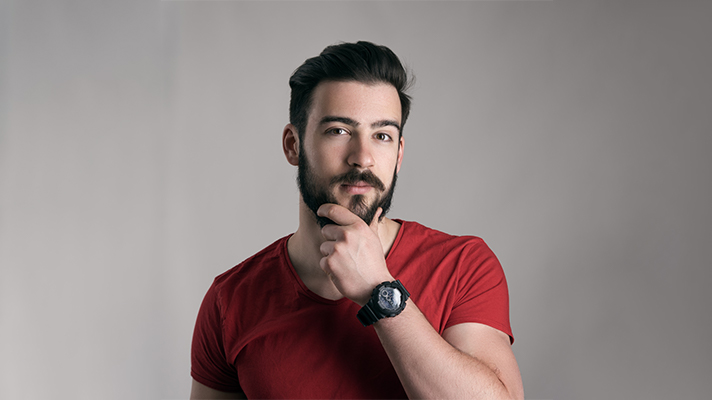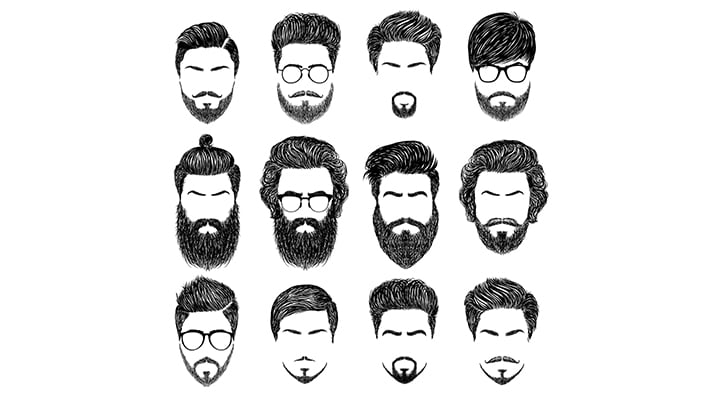
This is a longish article.
If you’re feeling noncommittal at the moment, don’t read it. Save it. Bookmark this page for later, when you have more time.
You’ll be glad you did, especially if your goal is to have a beard transplant soon after the Coronavirus pandemic.
As someone who is considering having a beard transplant in the near future, planning ahead can help ensure you have a successful procedure and heal faster with a smooth recovery.
This article will walk you through 10 things you should know before having a beard transplant.
Let's get into it.
ALSO CHECK: DHI Hair Transplant - The Top 8 Things You Need to Know
1. What is a beard transplant?
If you have heard of a procedure called Hair Transplant, then you already have an idea of what a beard transplant is. It’s just the same approach, what differs is the location of where it is applied.
A beard transplant is a procedure that involves moving hair from one part of your body to a certain area on your face. The moved hair is usually harvested from the base of your scalp at the back, or under your chin. During this procedure, an average of 4,000 to 7,500 hair follicles are moved one by one.
Yes, it’s quite a delicate procedure that should be done not just by anyone, except an experienced surgeon.
Depending on the type of a beard transplant, the procedure usually takes 2-5 hours and the patient won’t feel any sort of discomfort during the whole surgery.
2. Types of beard transplant
Just as there are different types of beards, there are also different types of beard transplants.
When you hear surgeons talking about a beard transplant, all they’re referring to is the technique used to perform the transplant.
There are two main beard transplant techniques that can be used: FUT (Follicular Unit Transplant) and FUE (Follicular Unit Extraction). Although both techniques can give satisfactory results, your beard Transplant specialist will choose the best option that suits your individual needs and expectations.
FUE involves harvesting single hair follicles from the donor area to the bald recipient area. On the other hand, the FUT method differs in that hair follicles are transplanted in small groups.
3. Beard transplant results
Each and every patient is different, and this means that beard transplants can differ from one patient to the other. It normally takes 3-4 months to see new hair growth. Within 5 months, you will start noticing a considerable amount of hair on the transplanted area. In 6 to 8 months, you will see the full result of the transplant.
4. What is bad about beard transplant?
Just like any other kind of surgery – whether it’s a cosmetic or reconstructive surgery – every surgery has its own downside and possible side effects. The cons of a beard transplant are as follows:
You’ll have to sacrifice hair from a certain part of your body: One of the major tickets that qualifies you as an ideal candidate for a beard transplant is having an area with sufficient hair growth. It is in that area that hair follicles will be harvested and transplanted to your face. So, it’s not like you have sacrificed your hair as such since it will still remain on your body.
Beard falls out in three weeks : Your transplanted beard will begin to fall out in three weeks. But that shouldn’t alarm you, it's expected. This process will pave the way for new hair growth.
5. Beard transplant recovery
One of the reasons why people are so hesitant to go through any kind of surgery is because of prolonged recovery periods. Generally speaking, people do not want their normal routine, their way of doing things to be disrupted. Doctors are now aware of this, and this is why they have devised ways to make the recovery time swift and short. The recovery time of a beard transplant is, at most, six days.
6. Are there any side effects?
Yes, there are possible risks when having a beard transplant, this is one of the main reasons why we recommend that you make sure that the surgeon performing the procedure is qualified.
Be wary of doctors or healthcare consultants who pressurize you to undergo any sort of treatment without telling you about the possible side effects associated with the treatment.
The potential risks and side effects of beard transplant are:
- Infections
- Pain and tenderness
- Bleeding
- Itching and swelling
- Inflammation of hair follicles (folliculitis)
When having the beard transplant at Estepalace, you don’t have to worry about any of the above risks because the procedure is performed by certified-surgeons who have more than 20 years of experience in this field.
7. What to expect after a beard transplant?
Expectations after having a beard transplant can differ from one patient to the other. But, generally, you can expect the follow:
- In the first 3-4 days after the surgery, treatment marks will still be visible on your beard area. But the good part is that you can start to do your daily routines during this period.
- You are advised not to wash your beard area in the first 5 days after the surgery. This also means that you should also avoid the rain.
- Expect most of the transplanted hair to shed off during the second and third week.
- If the procedure is performed using the FUE technique, your surgeon won’t use a surgical suture, but if it’s carried out using FUT method you can expect the use of absorbable sutures.
- It is normal to feel numb or have a tingling sensation on the treated area for several weeks.
- You can expect to see some results after 2 or 3 months, but you are advised to start shaving your beard 6 months post-surgery.
8. Beard transplant cost
A beard transplant is a delicate surgery that can be perfected by few surgeons on this planet, so, if you are to have it in the US, be prepared to fork out something like $5,000 to $15,000. But if you travel to Eastern Europe, to countries like Turkey, you can have it done by an expert surgeon for a lesser fee –something between € 1,000 and € 2,000 depending on where you do it.
9. Why is Turkey popular when it comes to beard transplant?
Turkey welcomes more than half a million medical tourists every year. Thousands and thousands of these international patients come specifically for a beard transplant.
I’m sure you’re now probably wondering what makes Turkey an attractive medical destination to foreigners. Well, the answer to that is simple, unlike many other European countries Turkey has:
- No long waiting times
- Affordable prices
- International accredited clinics
- Certified doctors
- Hospitable and friend locals
- State-of-the-art medical centers
- Advanced equipment
- Attractive historical landmarks and monuments
Besides the above mentioned reasons, international patients also prefer having a beard transplant in Turkey because the success rate is high. It is 98% high. ,
10. How to choose a clinic?
Considering that there are many beard transplant clinics spawning on a monthly basis, we understand that it may be difficult to choose the right one.
But, as FlyMedi, we deal with several best hair transplant clinics in Turkey and all over Europe. The best clinic we always recommend to our clients is Estepalace.
Why this clinic, I hear you ask?
Estepalace is an award-winning hair transplant clinic that often stands out when it comes to cutting edge facilities, sky-high success rates and excellent patient care treatments. The success rate of the clinic is close to 100% and the results achieved are as natural as they come.
Take The First Step Get Started!
Our team will dedicate their effort and time to help you choose the clinic best for you. Our goal is not just to find ‘a doctor’ for you, but to find ‘the right doctor’.






.jpeg?w=100)

